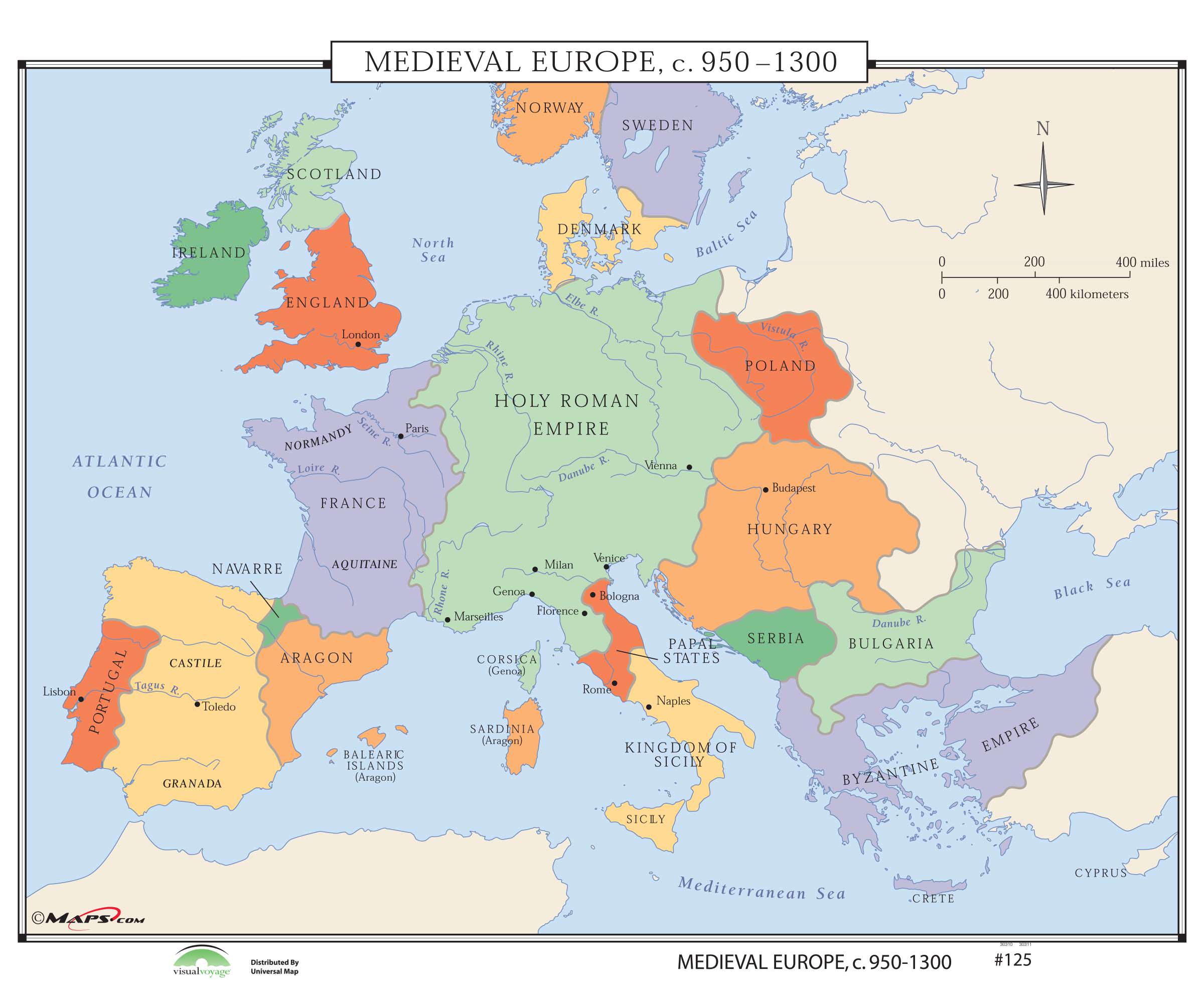

A feudal kingdom was divided amongst several great “magnates” (leading nobles such as dukes and counts, who controlled large fiefs), who were the direct vassals of the king. The different ranks of fief-holders formed the aristocracy of medieval European society. In feudal society everyone was supposed to have a lord – except the king at the top, who had no lord (at least, not on Earth: he was regarded as God’s vassal). Those who held just one knight’s fee were lords of the peasants who farmed the land in their small fief.

In this way, most fief-holders were both lords and vassals and kingdoms came to resemble, from top to bottom, pyramids of greater and lesser fiefs. They in turn could grant a fief of one knight’s fee to vassals of their own. So, a powerful vassal of a king, say, who had a fief worth 40 knight’s fees, could grant his own vassals lesser fiefs of 5 knight’s fees each from his own fief. The term “feudal system” came into use to describe a hierarchy of relationships which embraced medieval Europe, involving fief-holders of different ranks.Ī fief-holder was able to hive off part of his fief to form a smaller fief for a vassal of his own (in exchange for the traditional obligations, of course). Harold swearing oath on holy relics to William, Duke of Normandy.

In return for these services, the lord would promise to protect his vassal (a very valuable commitment in violent times) and to “give him justice” (that is, support him in court).Īll these promises and counter-promises were accompanied by solemn oaths, so that the whole was underpinned by strong religious sanctions – which, in a deeply religious age, counted for a great deal. This last was very important for what it led on to (see below, Representative Government). He also had a duty to provide his lord with advice. If he had only been given one knight’s fee, he would either undertake the service himself or (if old or frail) send a substitute.Ī vassals was also obliged to provide his lord with money from time to time – for example, when the lord’s son came of age, or the lord’s daughter got married, or if the lord was captured in battle and needed ransoming (quite a common occurrence – a soldier would far prefer to take an enemy prisoner than kill him, as a defeated opponent was worth a lot more alive than dead). So, if a vassal had been granted a fief worth 40 knight’s fees (a very large fief), he would be obliged to furnish his lord with 40 knights for 40 days a year.
#Feudal kingdoms in europe map plus#
A knight’s fee was normal the smallest fiefs, a sufficient amount of land to support one knight – enough land, in other words, to support a warrior and his very expensive war-horses, armor and weapons, plus his family and servants (including at least one servant to aid him while on campaign). This would depend on the amount of land involved, which was calculated in multiples of knight’s fees. The services the vassal owed the lord commonly entailed military service for a set amount of time each year (40 days was normal). In brief, a fief was a piece of property which a person was given on condition that he (and occasionally she) performed certain services to the one who gave it.Ī person who received a fief was a vassal of the one who had given him the fief, who was his lord. In the agrarian society of medieval Europe, a fief was usually a specified parcel of land. The word “feudal” derives from the word fief. As a shorthand, feudalism will do as well as any other. However, the alternative is to get bogged down in detailed descriptions and qualifications which risk overwhelming all but specialist medievalists. They regard it as inadequate in describing an extraordinarily complex situation.


 0 kommentar(er)
0 kommentar(er)
